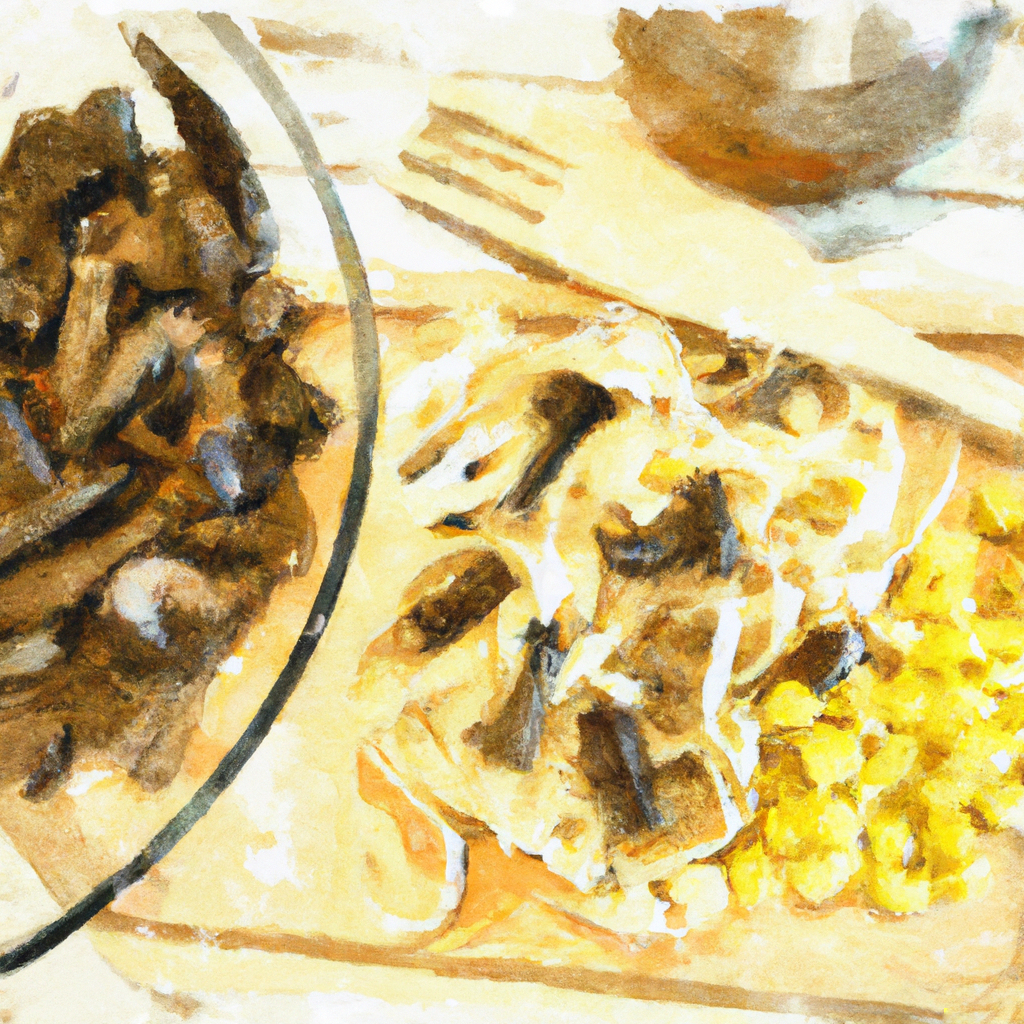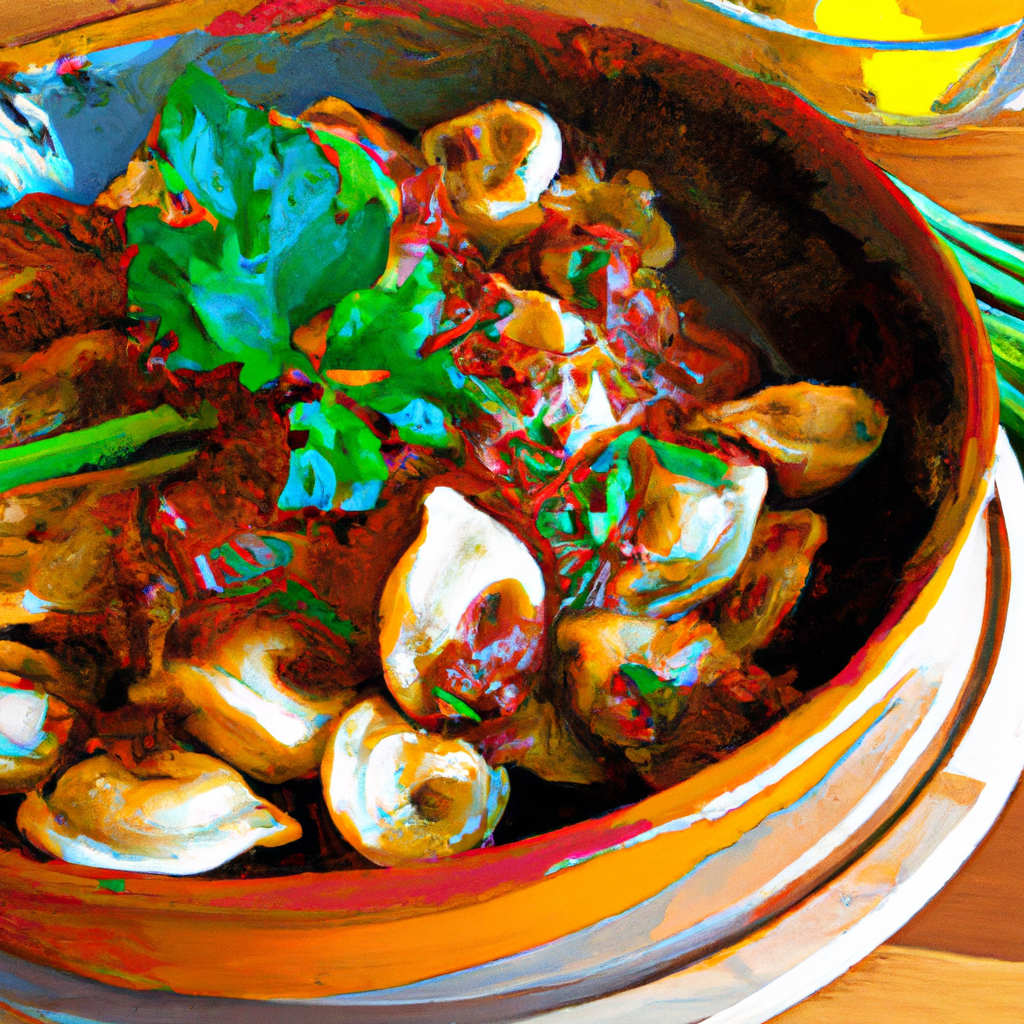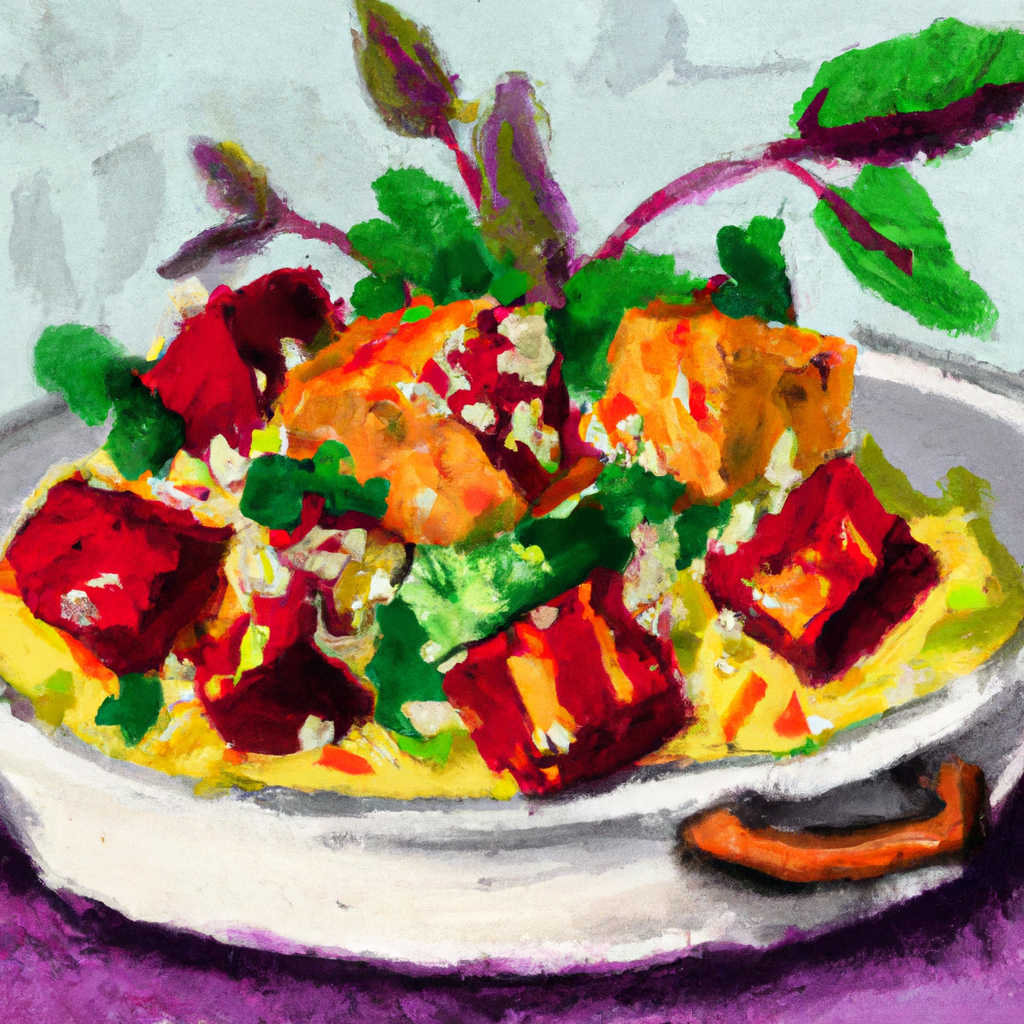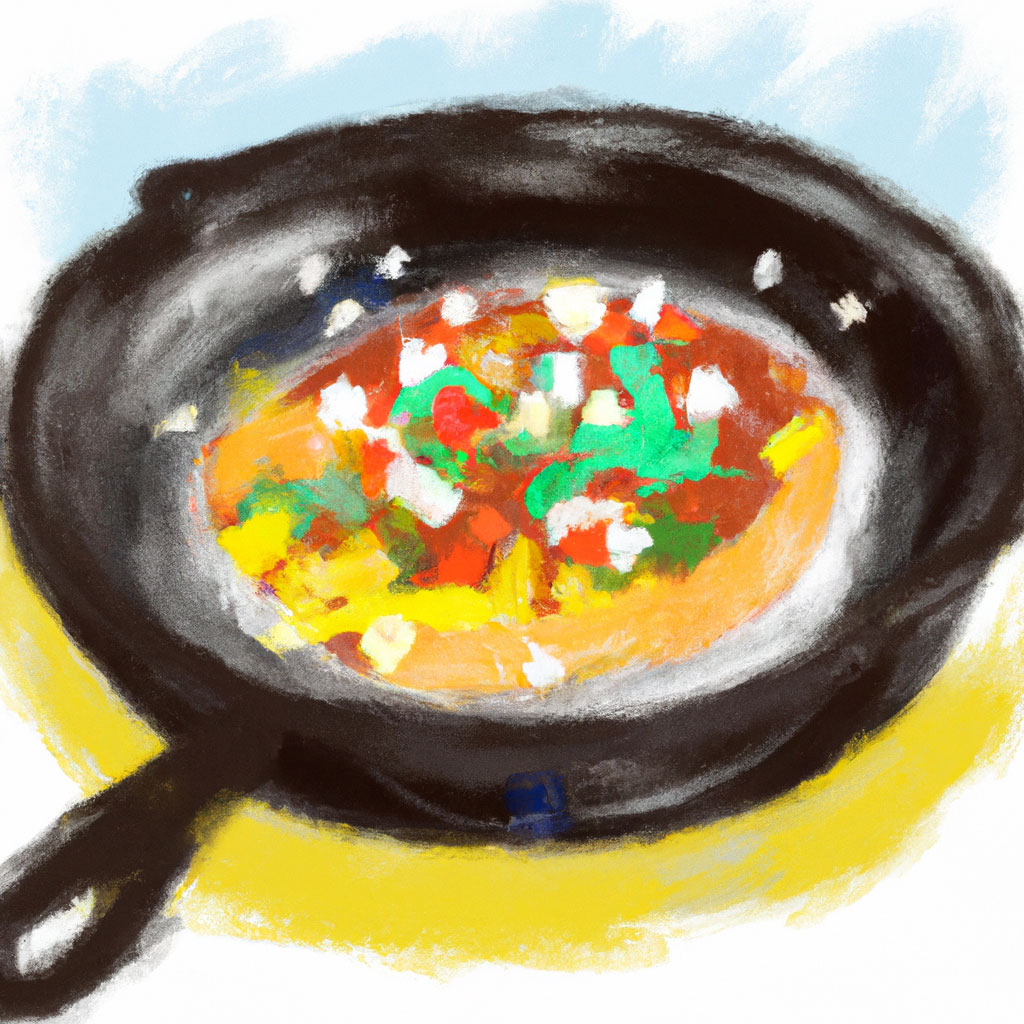What is sautéing?
Sautéing is a cooking technique in which food is cooked in a pan over high heat with a small amount of oil or fat. The food is typically cut into small pieces and is constantly moved around the pan with a utensil, such as a spatula, to ensure even cooking and to prevent burning. Sautéing is often used to cook vegetables, meat, or fish, and can be used as a cooking step in a larger recipe.
What foods can be sautéed?
Many types of foods can be sautéed, including:
- Vegetables: bell peppers, mushrooms, zucchini, asparagus, onions, garlic, eggplant and many more.
- Meat: chicken breasts, pork tenderloin, shrimp, scallops and so on.
- Fish: salmon, sole, tilapia, and other types of fish can also be sautéed.
- Plant-based: tofu, tempeh and other plant-based protein options.
- Grains: such as quinoa or couscous, sautéed with some vegetables and spices can make great side dish or a light meal.
It is important to note that some food items will require pre-cooking before sautéing, also different types of food might have different sautéing time.
What are some dishes that are cooked by sautéing?
Many dishes can be made by sautéing, but here are a few examples:
- Vegetable stir-fry: A classic dish made by sautéing a variety of vegetables, such as bell peppers, broccoli, and mushrooms, in a pan with a small amount of oil and a flavorful sauce.
- Chicken sauté: Thinly sliced chicken breast or tenderloin is sautéed with vegetables such as bell peppers, onions and garlic with some seasonings.
- Beef Stroganoff: sautéed slices of beef with onion, mushroom, paprika and other seasonings, usually served over pasta or rice.
- Paella: this is a traditional Spanish dish that is sautéed with shellfish, chicken, and vegetables along with saffron and other spices.
- Shrimp Scampi: where shrimp is sautéed with butter, garlic, lemon juice, and white wine.
- Tofu or tempeh are commonly sautéed and it is often used as a main ingredient in a Asian-inspired dish.
These are just a few examples of the many dishes that can be made by sautéing. The technique is versatile and can be used to create a wide range of flavors and dishes, depending on the ingredients used and the seasonings added.
What is the difference between sautéing and pan frying or stir frying?
Sautéing, pan-frying, and stir-frying are all cooking techniques that involve cooking food in a pan over high heat with a small amount of oil or fat. However, there are a few key differences between the three techniques:
- Sautéing: generally refers to cooking small, evenly cut pieces of food quickly over high heat, with constant movement and flipping, in a small amount of oil or butter. Sautéing is typically used for small cuts of meat, fish, and vegetables.
- Pan-frying: is similar to sautéing, but the food is cooked in a bit more oil, the food is generally cut into larger pieces and the goal is to brown the surface and cook the food through. Pan-frying is often used for larger cuts of meat and fish.
- Stir-frying: involves cooking food in a pan or wok over high heat with small amount of oil while continuously stirring, usually with a wok spatula. It is commonly used to cook vegetables and sometimes meat in Asian cuisine. It is also used to cook food quickly and keep them crispy.
In summary, sautéing is done with small cuts of meat and vegetables and stir-frying is a similar technique which is used to cook quickly and keep food crispy and pan-frying involves cooking larger cuts of meat and fish.
Selected Recipes
- This Mushroom Sweet Corn Pasta is ready in 30 minutes.
- This recipe for Harissa Lamb Orecchiette With Mustard Greens has you making your own pasta. If that seems like overkill, we won't tell anyone if you buy a box. Also, this dish is plenty well seasoned as it is, and doesn't call for the parsley. Use it as an optional garnish if you like.
- This Creamy Polenta with Brussels Sprouts and Beetroot will pair well with Crispy Tofu.
- Sauté Beans, Other Grain, Thyme, Garlic, and Chard
- Sauté Seafood, Rice, Parsley, Mushroom, and Peas
- Sauté Cheese, Quinoa, Oregano, Nuts, and Artichoke
- Sauté Beans, Pasta, Oregano, Garlic, and Fennel
- Sauté Eggs, Polenta, Oregano, Onion, and Endive
- Sauté Tempeh, Quinoa, Basil, Garlic, and Cauliflower
- Sauté Tofu, Pasta, Thyme, Garlic, and Parsnip
- Sauté Beans, Pasta, Rosemary, Garlic, and Spinach
- Sauté Beans, Other Grain, Rosemary, Lemon, and Spinach
- Sauté Cheese, Pasta, Rosemary, Bacon, and Peas
- Sauté Beans, Other Grain, Rosemary, Onion, and Dandelion Greens
- Sauté Turkey, Quinoa, Oregano, Mushroom, and Kale
- Sauté Eggs, Rice, Basil, Garlic, and Peas
- Sauté Beans, Pasta, Parsley, Nuts, and Peas
- Sauté Tempeh, Rice, Parsley, Lemon, and Asparagus
- Sauté Seitan, Polenta, Thyme, Onion, and Carrot
- Sauté Cheese, Quinoa, Cilantro, Onion, and Asparagus
- Sauté Tempeh, Pasta, Cilantro, Garlic, and Peas
- Sauté Turkey, Rice, Cilantro, Lemon, and Spinach
- Sauté Tofu, Pasta, Parsley, Garlic, and Cauliflower
- Sauté Chicken, Rice, Dill, Lemon, and Spinach
- Sauté Seafood, Pasta, Oregano, Garlic, and Spinach
- Sauté Cheese, Other Grain, Thyme, Mushroom, and Peas
- Sauté Tempeh, Pasta, Parsley, Nuts, and Dandelion Greens
- Sauté Cheese, Potato, Rosemary, Garlic, and Kale
- Sauté Tempeh, Quinoa, Cilantro, Garlic, and Peas
- Sauté Eggs, Other Grain, Thyme, Onion, and Radish
- Sauté Pork, Pasta, Cilantro, Garlic, and Asparagus
- Sauté Cheese, Pasta, Parsley, Bacon, and Parsnip
- Sauté Tempeh, Other Grain, Cilantro, Mushroom, and Cauliflower
- Sauté Pork, Pasta, Thyme, Mushroom, and Carrot
- Sauté Seitan, Rice, Oregano, Garlic, and Peas
- Sauté Beef, Potato, Basil, Lemon, and Kale
- Sauté Seafood, Quinoa, Thyme, Bacon, and Peas
- Sauté Beef, Rice, Thyme, Garlic, and Asparagus
- Sauté Cheese, Pasta, Basil, Lemon, and Carrot
- Sauté Cheese, Rice, Dill, Onion, and Cabbage
- Sauté Turkey, Other Grain, Cilantro, Garlic, and Carrot
- Sauté Tofu, Quinoa, Cilantro, Mushroom, and Dandelion Greens
- Sauté Lamb, Potato, Dill, Mushroom, and Cauliflower
- Sauté Beans, Pasta, Cilantro, Nuts, and Asparagus
- Sauté Cheese, Pasta, Thyme, Mushroom, and Peas
- Sauté Tofu, Quinoa, Oregano, Lemon, and Artichoke
- Sauté Cheese, Pasta, Parsley, Garlic, and Cabbage
- Sauté Seafood, Polenta, Thyme, Garlic, and Kale
- Sauté Eggs, Rice, Parsley, Garlic, and Asparagus
- Sauté Seafood, Polenta, Rosemary, Mushroom, and Peas
How will you prepare corn, cheese, pasta, and mushrooms?

Lamp, pasta, and mustard greens? Yeah, you can do it.

Can tofu, Brussels sprouts, and polenta be a winning combination?


